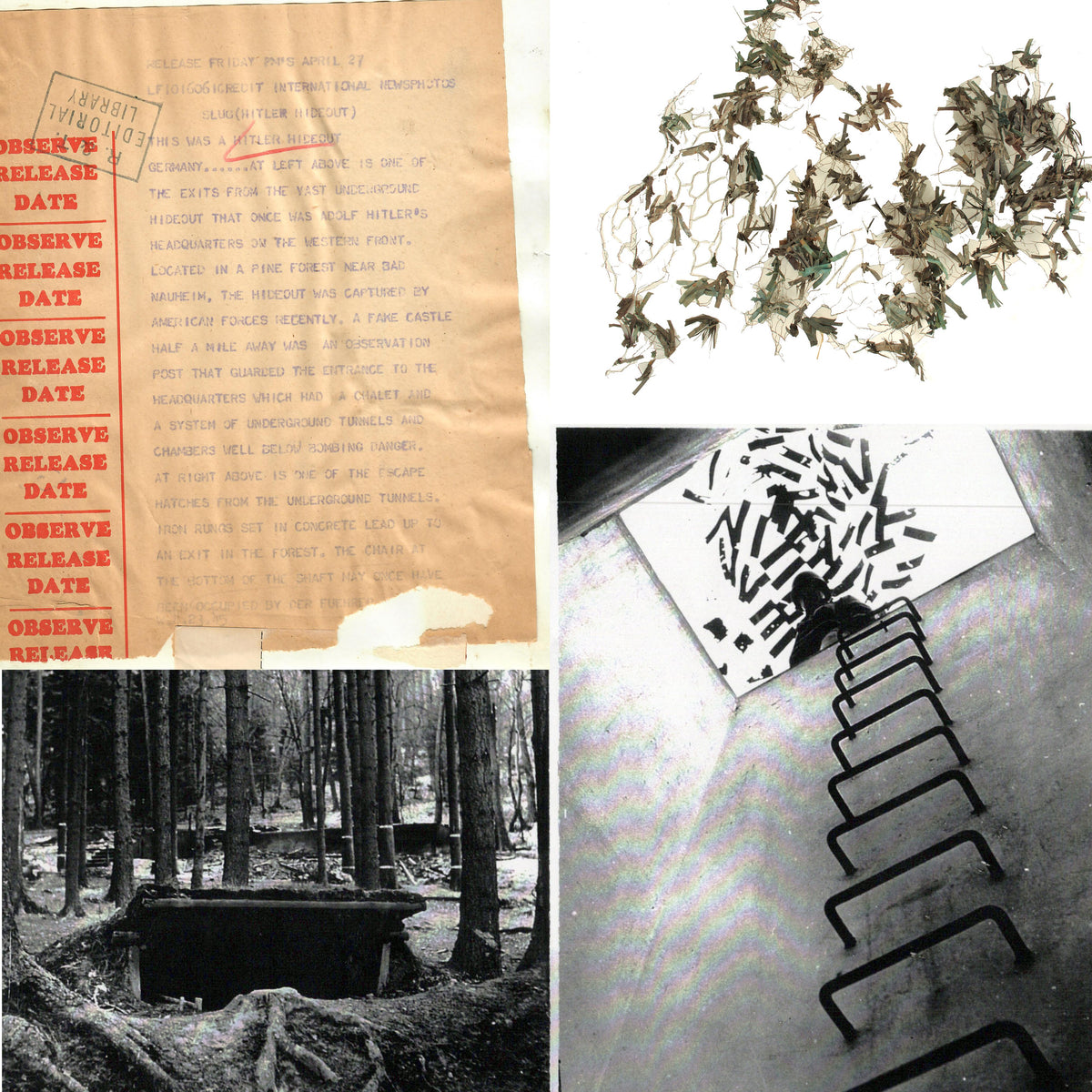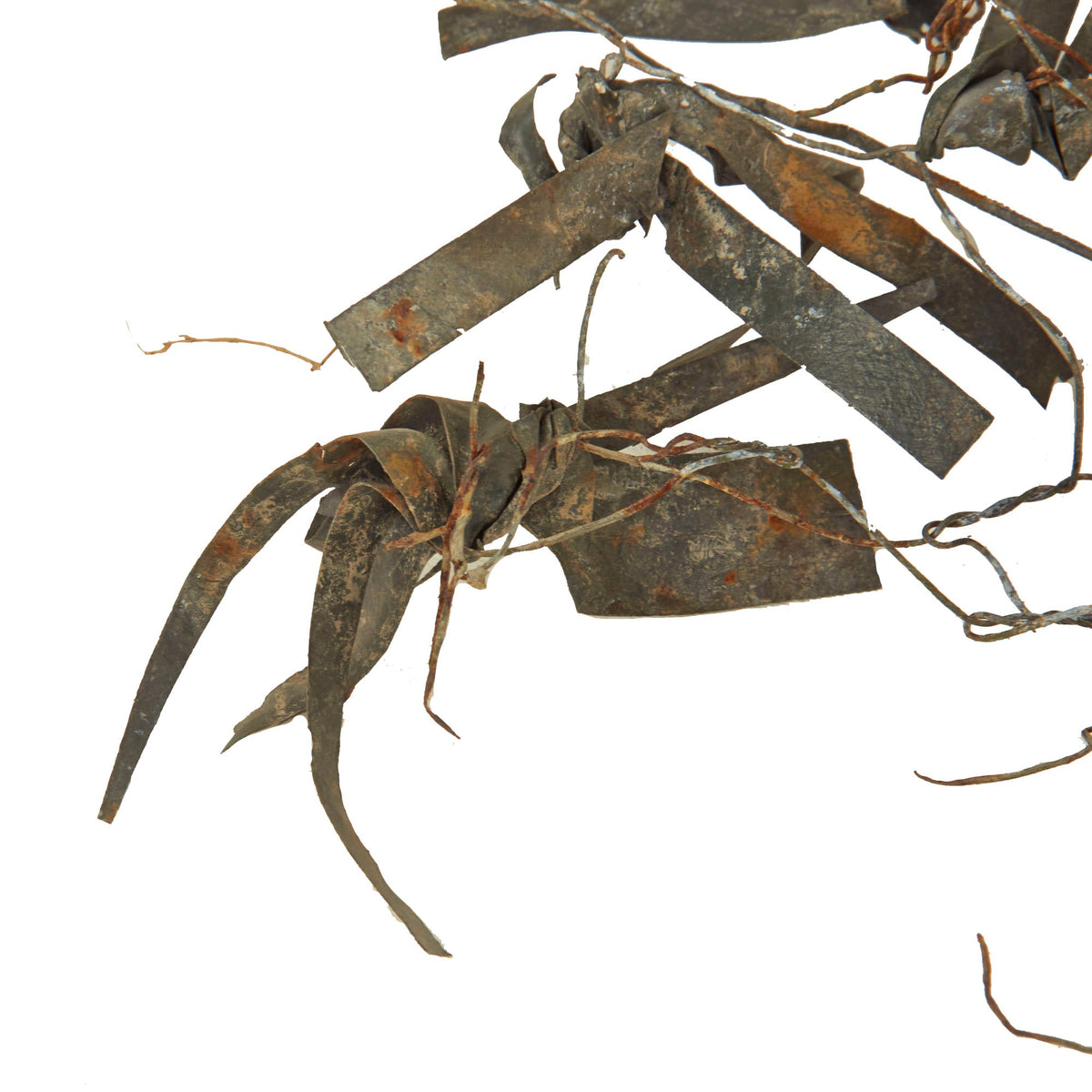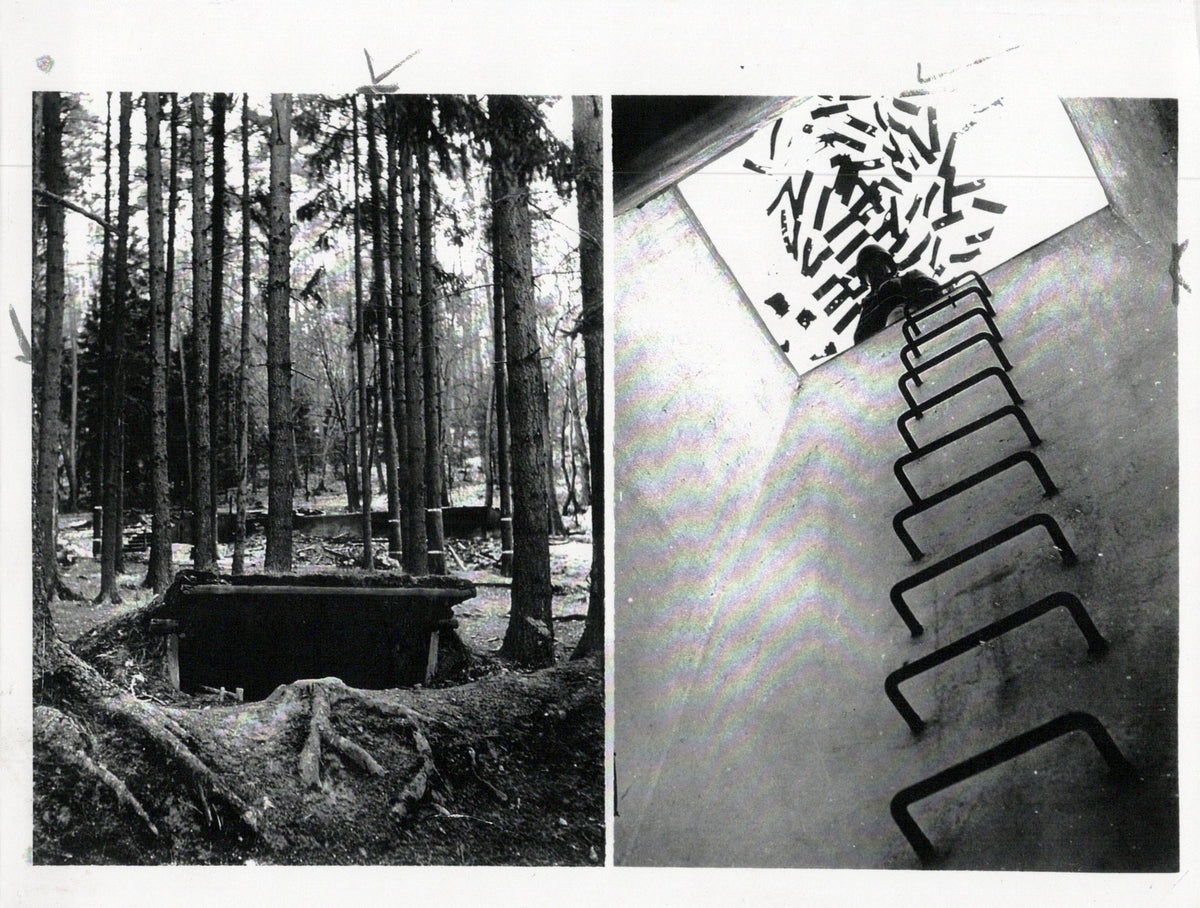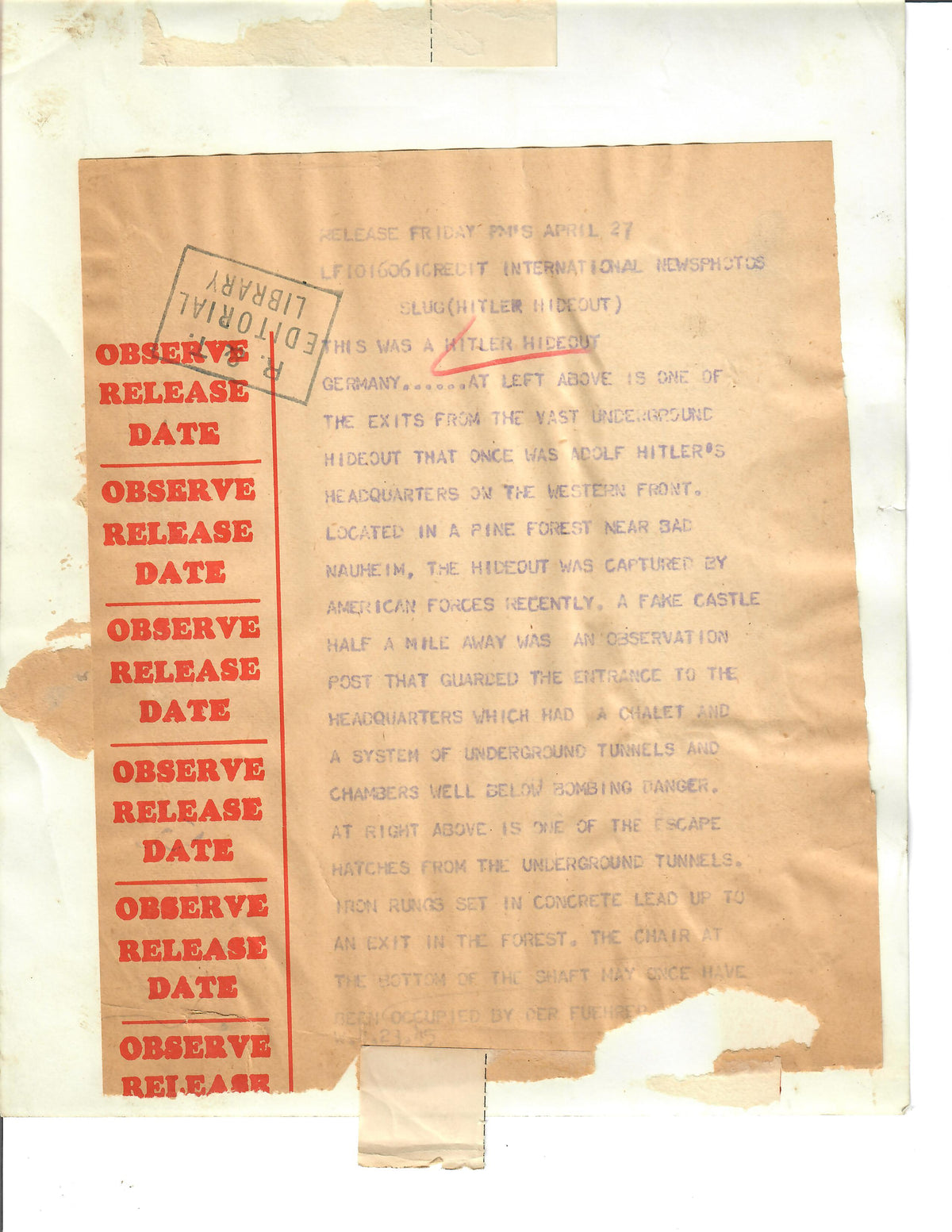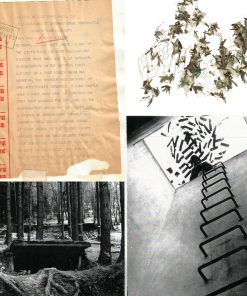Original German WWII Chickenwire Camouflage Netting Taken from Obersalzberg Berchtesgaden Eagles Nest Original Items
$ 1.895,00 $ 473,75
Original Item: One-of-a-kind collection. This is genuine World War Two German Chicken wire Camouflage Netting reportedly taken from the Obersalzberg Eagles Nest. It is accompanied by copies of the original news photos and release paper that reads:
RELEASE FRIDAY APRIL 27
LF1016061 CREDIT INTERNATIONAL NEWS PHOTOS
SLUG (AH HIDEOUT)
THIS WAS A HIT*** HIDEOUT
GERMANY…… AT LEFT ABOVE IS ONE OF
THE EXITS FROM THE VAST UNDERGROUND
HIDEOUT THAT ONCE WAS ADOLF HIT***’S
HEADQUARTERS ON THE WESTERN FRONT.
LOCATED IN A PINE FOREST NEAR BAD
NAUHEIM, THE HIDEOUT WAS CAPTURED BY
AMERICAN FORCES RECENTLY. A FAKE CASTLE
HALF A MILE AWAY WAS AN OBSERVATION
POST THAT GUARDED THE ENTRANCE TO THE
HEADQUARTERS
WHICH HAD A CHALET AND
A SYSTEM OF UNDERGROUND TUNNELS AND
CHAMBERS WELL BELOW BOMBING DANGER.
AT RIGHT ABOVE IS ONE OF THE ESCAPE
HATCHES FROM THE UNDERGROUND TUNNELS.
IRON RUNGS SET IN CONCRETE LEAD UP TO
AN EXIT IN THE FOREST. THE CHAIR AT
THE BOTTOM OF THE SHAFT MAY ONCE HAVE
BEEN OCCUPIED BY DER FUEHRER
W.4.23.45
The photos and release show an identical Chickenwire Camouflage Netting at the location of a bunker near BAD NAUHEIM which was the location of the underground bunker for Field Marshal Gerd von Rundstedt’s wartime headquarters.
Kehlsteinhaus
The Kehlsteinhaus (known in English as the Eagle’s Nest) is a NSDAP-constructed building erected atop the summit of the Kehlstein, a rocky outcrop that rises above Obersalzberg near the southeast German town of Berchtesgaden. It was used exclusively by members of the NSDAP Party for government and social meetings. It was visited on 14 documented instances by Adolf H. Today, it is open seasonally as a restaurant, beer garden, and tourist site.
Allied capture
The Kehlsteinhaus was a target for the 25 April 1945 Bombing of Obersalzberg. This was a Royal Air Force bombing raid conducted by No. 1, No. 5, and No. 8 Group and No. 617 Squadron. The small house proved an elusive target for the force of 359 Avro Lancasters and 16 de Havilland Mosquitoes, which bombed and severely damaged the Berghof area instead.
It is uncertain which Allied military unit was the first to reach the Kehlsteinhaus. The matter is compounded by popular confusion of it and the town of Berchtesgaden taken on 4 May by forward elements of the 2nd Armored Division (France) ( Specifically the well-known unit how “La Nueve” composed of Spanish Republicans.) or elements of the 7th Infantry Regiment of the 3rd Infantry Division of XV Corps of the U.S. Seventh Army of the Sixth Army Group.
Reputedly, members of the 7th went as far as the elevator to the Kehlsteinhaus, with at least one person claiming that he and a partner continued on to the top. In a Library of Congress interview and more recent interviews, Herman Louis Finnell of the 3rd Infantry Division said that his regiment entered the Berghof, not the Kehlsteinhaus. However, the 101st Airborne claims it was first both to Berchtesgaden and the Kehlsteinhaus.
Meanwhile elements of the French 2nd Armored Division, Laurent Touyeras, Georges Buis, and Paul Répiton-Préneuf, were present on the night of 4-5 May and took AH’s personal items and several photographs before Americans arrived and before leaving on 10 May at the request of U.S. command, and so say the numerous testimonies of the Spanish soldiers who went along with them.
Undamaged in the 25 April bombing raid, the Kehlsteinhaus was subsequently used by the Allies as a military command post until 1960, when it was handed back to the State of Bavaria.
Fast Shipping with Professional Packaging
Thanks to our longstanding association with UPS FedEx DHL, and other major international carriers, we are able to provide a range of shipping options. Our warehouse staff is expertly trained and will wrap your products according to our exact and precise specifications. Prior to shipping, your goods will be thoroughly examined and securely secured. We ship to thousands clients each day across multiple countries. This shows how we're dedicated to be the largest retailer on the internet. Warehouses and distribution centres can be located throughout Europe as well as the USA.
Note: Orders with more than one item will be assigned a processing date depending on the item.
Before shipping before shipping, we'll conduct a thorough inspection of the items you have ordered. Today, the majority of orders will be delivered within 48 hours. The delivery time will be between 3-7 days.
Returns
The stock is dynamic and we cannot completely manage it because multiple stakeholders are involved, including our factory and warehouse. So the actual stock may alter at any time. It's possible that you may not receive your order once the order has been made.
Our policy is valid for a period of 30 days. If you don't receive the product within 30 days, we are not able to issue a refund or an exchange.
You can only return an item if it is unused and in the same state as the day you received it. You must have the item in its original packaging.
Related products
Uncategorized
Uncategorized
Armoured Fighting Vehicles of the World: AFVs of World War One (Hardcover Book) New Made Items
Uncategorized
Uncategorized
Angolan Rebel 1970s era 60mm Inert Display Mortar from Angolan Civil War Original Items
Uncategorized
Uncategorized
Uncategorized
Uncategorized
Uncategorized
Uncategorized
Uncategorized
Uncategorized
Uncategorized
Uncategorized
Uncategorized
Uncategorized
Uncategorized
Uncategorized
Uncategorized
